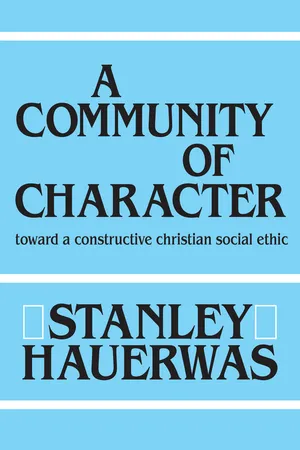PART ONE
The Narrative Character of Christian Social Ethics

Selected by Christianity Today as one of the 100 most important books on religion of the twentieth century.
Leading theological ethicist Stanley Hauerwas shows how discussions of Christology and the authority of scripture involve questions about what kind of community the church must be to rightly tell the stories of God. He challenges the dominant assumption of contemporary Christian social ethics that there is a special relation between Christianity and some form of liberal democratic social system.